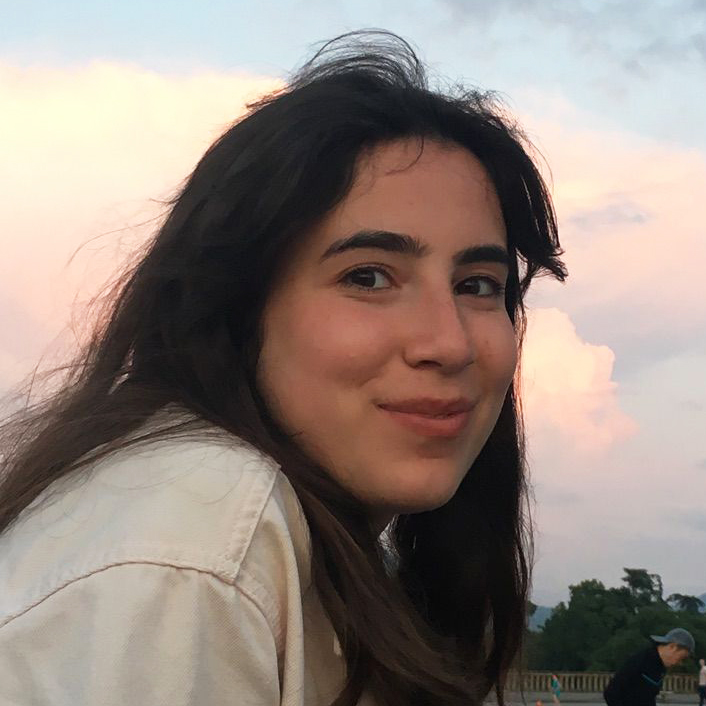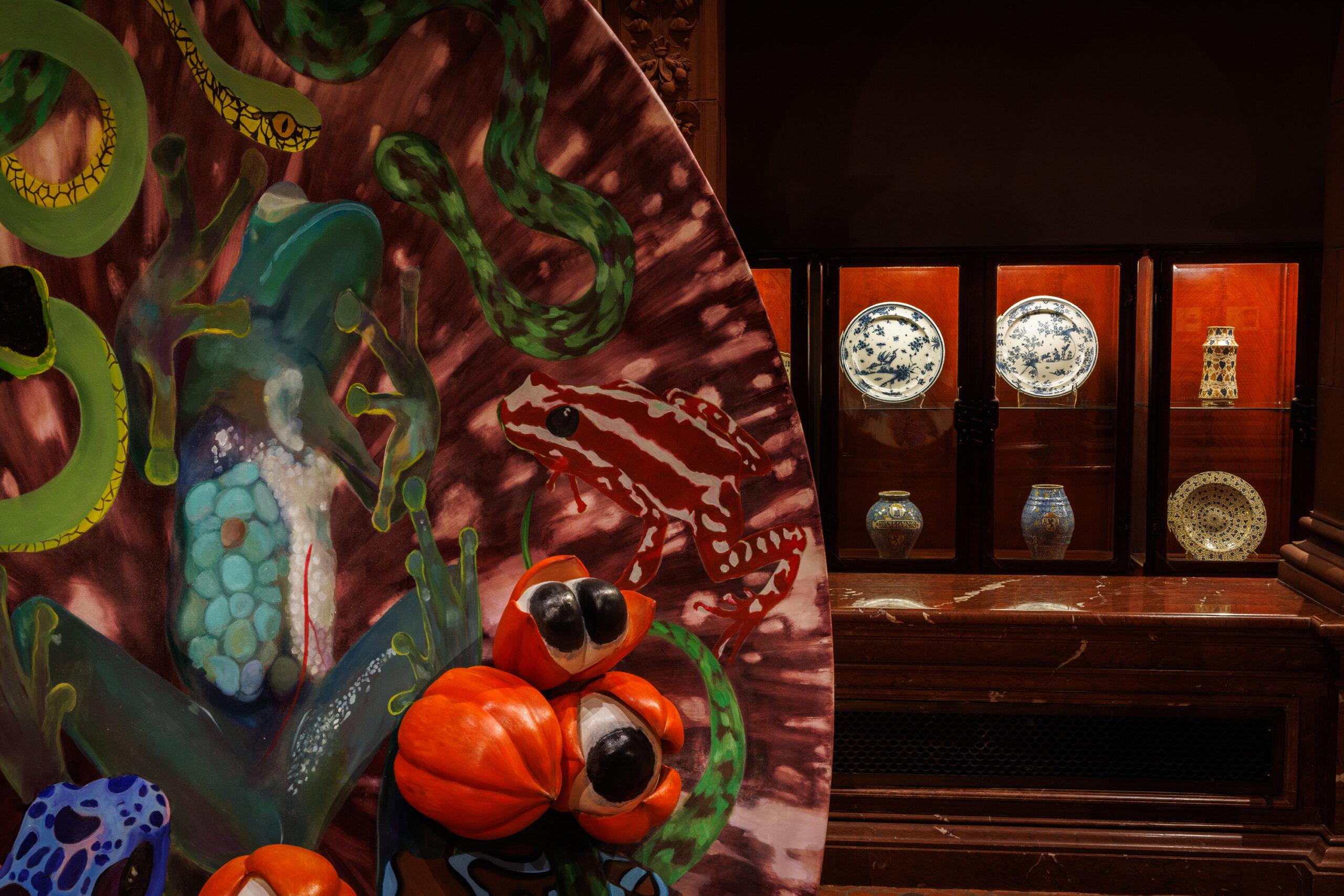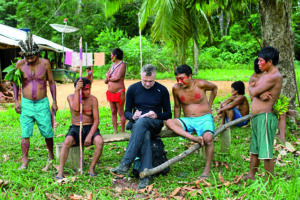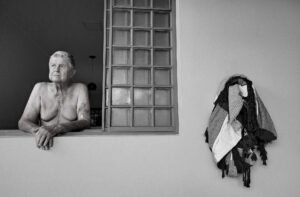In Amazonian folklore, the boto-cor-de-rosa, or pink river dolphin, is a magical, shape-shifting creature, who at night emerges from the water and turns into a handsome man clad in a white suit and white hat. It is considered sacred, and so should not be killed, or eaten, or even gazed upon. The Brazilian artist Adriana Varejão’s exhibition at New York’s Hispanic Society, Don’t Forget, We Come From the Tropics, breaks that last rule.
The artist’s sinuous fiberglass plate paintings put mythical Amazonian creatures front and center: tropical birds and opossums and, yes, pink dolphins that bulge and protrude. Varejão’s works encourage us to look and think about these animals, who, in turn, stare back at us. In “Urutau,” a bird’s red eyes glow ominously; in “Mucura,” an Amazonian marsupial’s head emerges from a pregnant woman’s body and peers at onlookers. Even the circular dots on Varejão’s guaraná seeds, crowded around a cluster of poisonous frogs, resemble pupils.
In direct contrast with the mythical figures on the front of her painted plates, the pieces’ backsides resemble more traditional designs. Behind the series, Spanish lusterware and Ottoman Iznik pottery, handpicked by Varejão from the museum’s collection, line the shelves.
The artist, whose work is known for interrogating Brazil’s violent colonial past, has been a popular name in the country’s art scene since the early 1990s. She began spending time with Indigenous Yanomami people in the Amazon basin two decades ago, researching the region’s traditions and customs.
The pieces at the exhibit draw from her time in the jungle, and while the results—which rely heavily on oversimplified tropical motifs—can feel obvious, they play with the idea of perception in novel ways. The exhibition is on view through June 22.
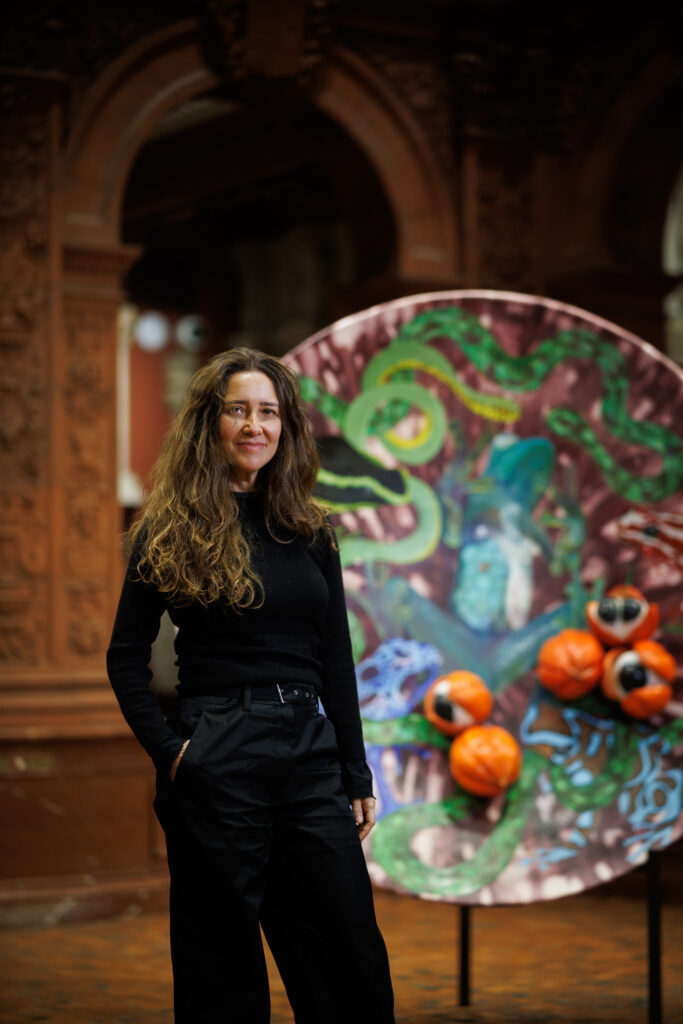
The Amazon rightfully attracts a lot of media attention, both in Brazil and internationally. It is by now common knowledge that caring for the rainforest is vital to the protection of millions of people, flora, and fauna. Varejão’s paintings present this idea from another angle. They ask, “What if the Amazon was watching us, too?” The implication here is that we should be acting more quickly, thinking more carefully, and simply doing more.
The artist melds the museum’s traditional European influences with Amazonian folklore again with an intervention on the monumental equestrian sculpture of El Cid, the 11th-century Castilian knight and ruler, which sits in the society’s outdoor Beaux-Arts plaza.
In its original form, the 1927 work by Anna Hyatt Huntington depicts the warrior on his horse, triumphantly holding a flag. Varejão, however, questions just how noble this representation of colonial power is by wrapping an Amazonian fiberglass anaconda—an animal that suffocates its prey before eating it whole—around the knight.
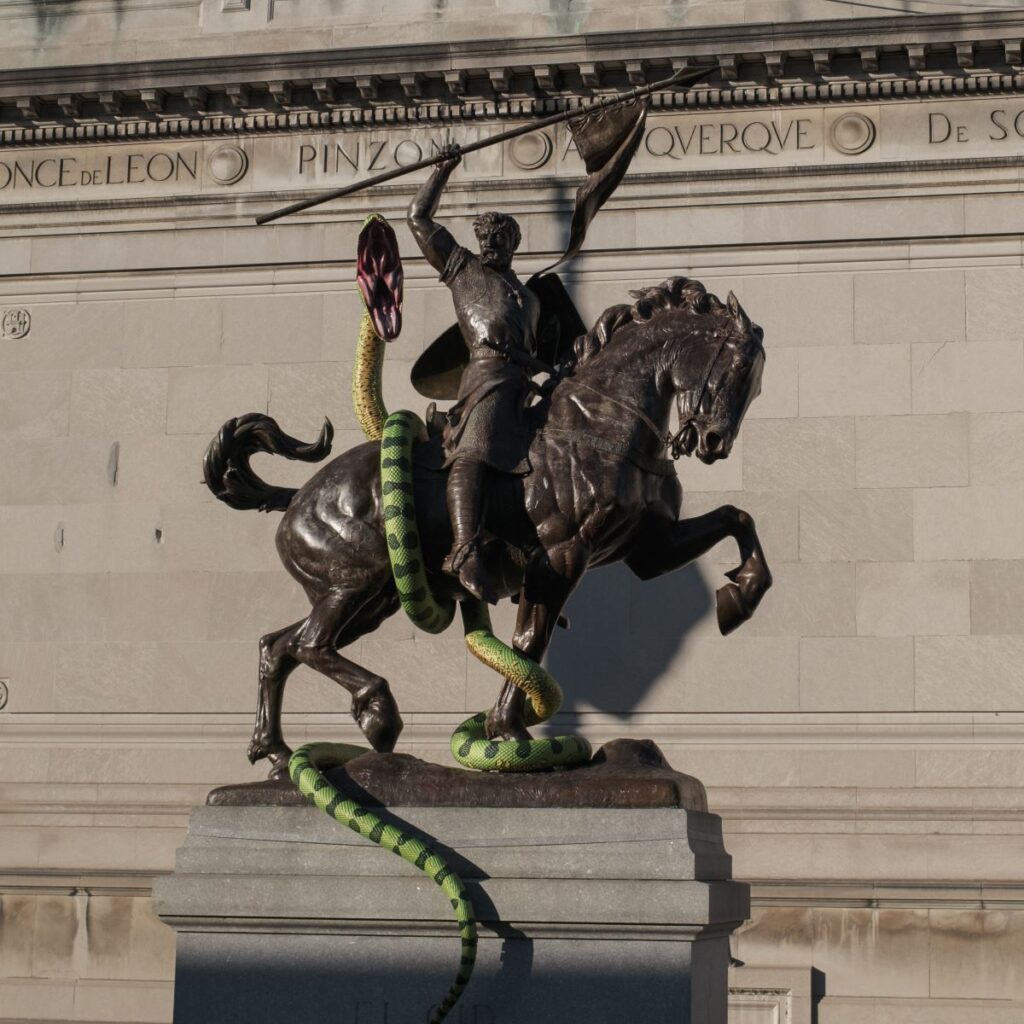
This piece’s visceral, almost aggressive messaging makes it by far the most successful work in the exhibition. It calls to mind a foundational text of Brazilian modernism, Manifesto Antropófago (1928), an essay by the writer Oswald de Andrade that encourages the country’s artists to swallow and cannibalize European culture so as to transform it into something uniquely Brazilian.
The exhibition title, Don’t Forget, We Come From the Tropics, also borrows from a quote by the surrealist modernist Brazilian sculptor Maria Martins. Varejão’s biggest challenge, like that faced by Brazilian modernists, is defining just what creating something uniquely Brazilian means.
The idea that there is a “we” in the first place in this particular context, and that the Yanomami see themselves and their myths as part of that “we,” is a risky assumption given that those in power have worked to erase the role of Indigenous people in the country since its inception. It seems that Varejão hasn’t entirely grappled with that in this new series.


